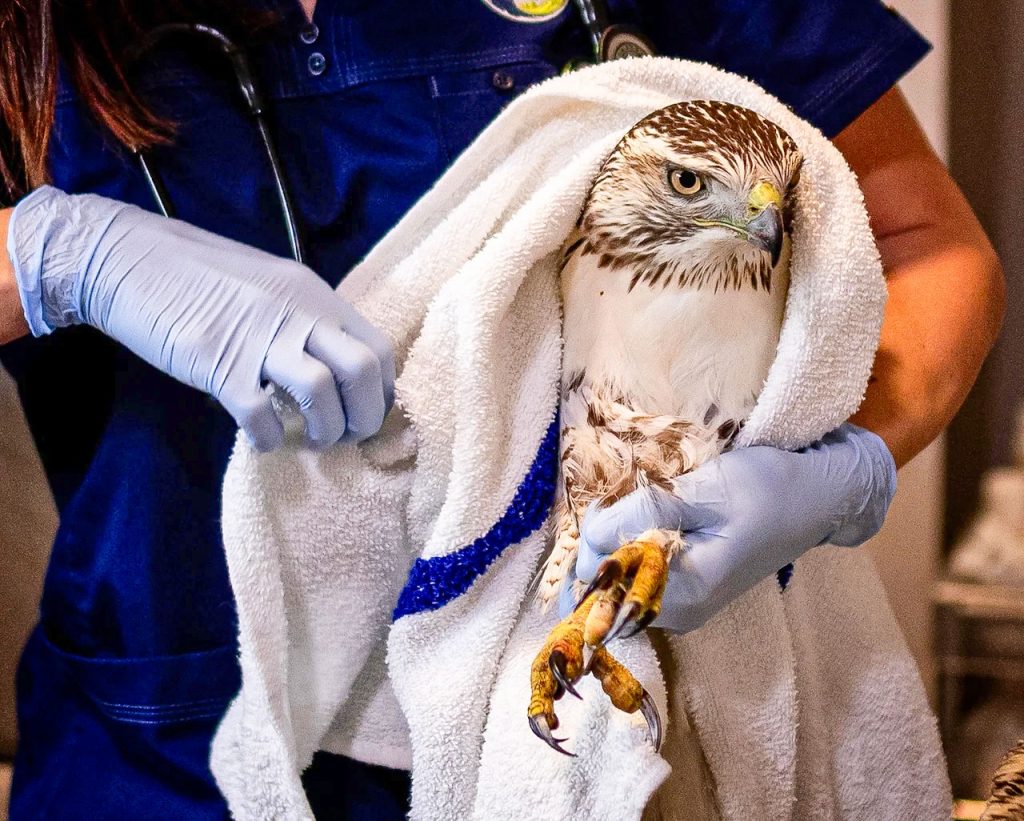Keeping wildlife wild and safe

Expert care and rehabilitation for wildlife is available at Rocky Mountain Wildlife Alliance. Keeping fauna out of harm’s way involves reducing human interactions which can lead to injuries or human dependence.
Long before our community existed, wildlife lived and thrived in the picturesque landscape that now encompasses our homes, businesses and roadways. Knowing how to best appreciate and care for wildlife is important in creating harmony for our people, pets and the beautiful fauna.
With summer in full swing, many young animals are exploring for the first time, increasing encounters with humans. “It’s crucial to be aware of these interactions and take steps to minimize harm to both wildlife and ourselves,” said Emily Davenport, a local wildlife expert with the Rocky Mountain Wildlife Alliance.
Emily noted that some of the most observed summer visitors in the area are wild turkeys with young poults in tow, raccoons, fox squirrels and striped skunks. Other beauties that call our community home include Cooper’s hawks, black-headed grosbeaks, broad-tailed hummingbirds, great horned owls, western tanagers, lazuli buntings, Say’s phoebes, elk, deer, bears, coyotes, foxes, bobcats, mountain lions, and bull and garter snakes.
Emily offered some great advice about coexisting with wildlife.
When you see wildlife:
- Keep your distance; approaching too closely can stress wildlife and provoke unpredictable behavior
- Refrain from feeding wild animals, as this can lead to dependency, alter natural behaviors, and increase the likelihood of disease and dangerous encounters
How to avoid attracting wildlife into residential areas and keep pets safe:
- Dispose of waste properly
- Feed pets indoors
- Bring bird feeders in at night
- Keep garages closed to prevent animals from seeking shelter
- Keep cats indoors
- Keep dogs on a leash
Help prevent wildlife injuries:
- Drive within speed limits
- Never throw food out of a car window which can attract wildlife to roadways
- Keep bird feeders at least four feet from windows
- Keep window shades partially drawn during the day
- Keep cats indoors to protect native birds
- Use snap traps instead of poisons to prevent rodent suffering and secondary poisoning to birds of prey
If you find an injured or orphaned animal:
- Take a photo from a respectful distance
- Contact a wildlife professional, such as those at the Rocky Mountain Wildlife Alliance or Colorado Parks and Wildlife, before taking any further action
- If directed to contain the animal, use a sturdy box or pet carrier with adequate ventilation, and always wear gloves to protect yourself and minimize stress to the animal
- Avoid direct skin to skin contact as much as possible. Place the box or carrier over the animal and await direction from the experts to ensure your safety and the well being of the animal
The Rocky Mountain Wildlife Alliance can be reached at 720-831-8130 or www.rmwalliance.org. To reach Colorado Parks and Wildlife, visit cpw.state.co.us.
By Elean Gersack; photo courtesy of Rocky Mountain Wildlife Alliance